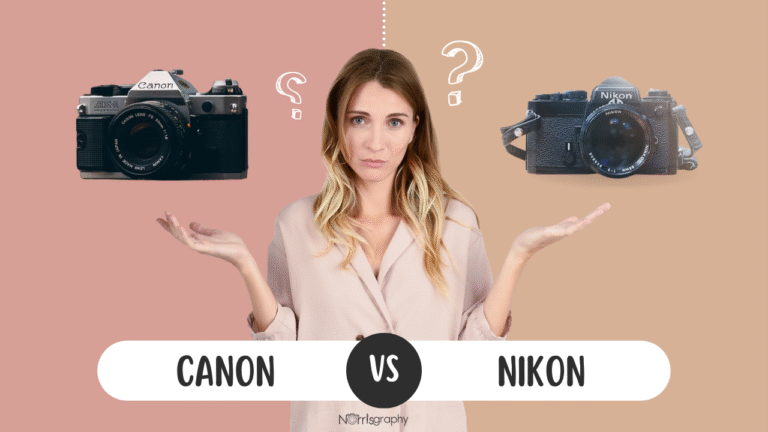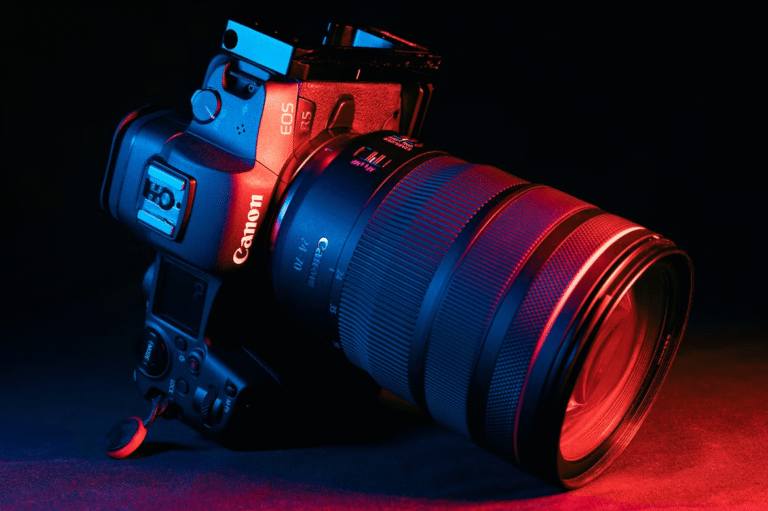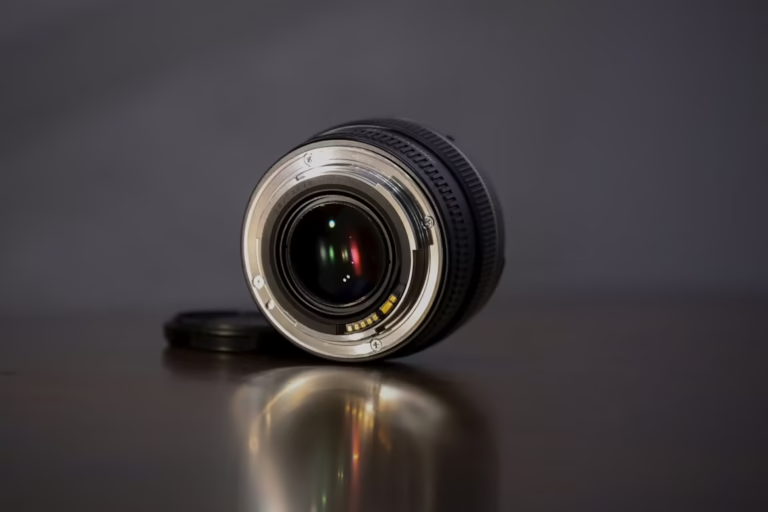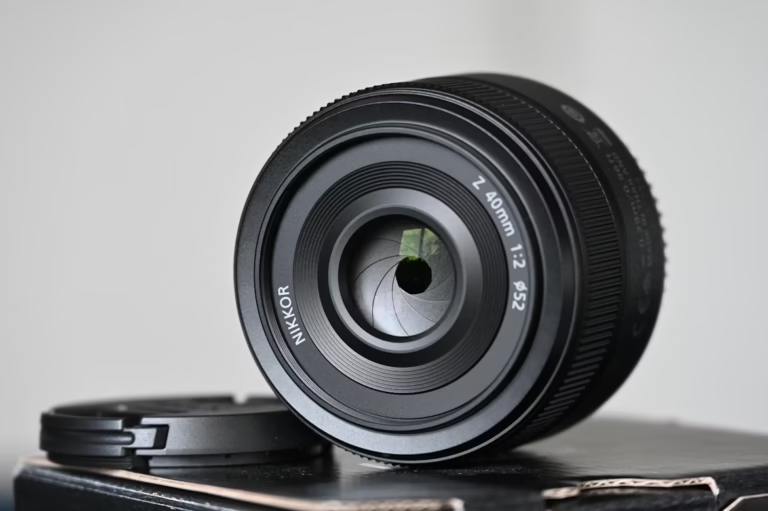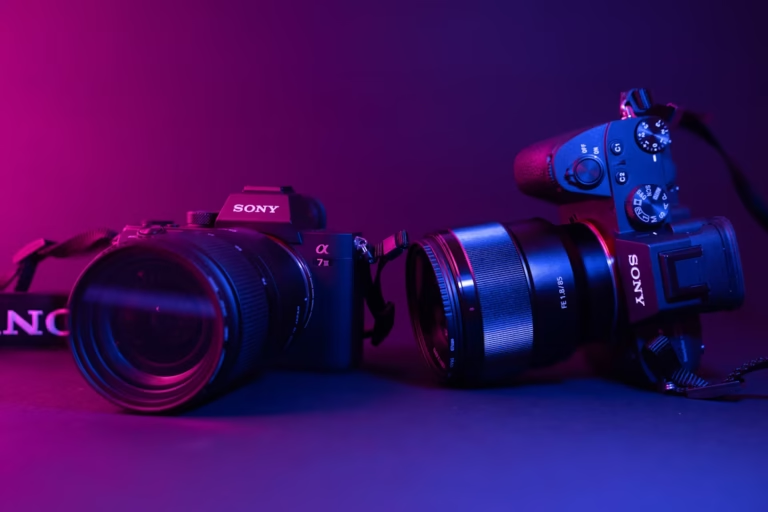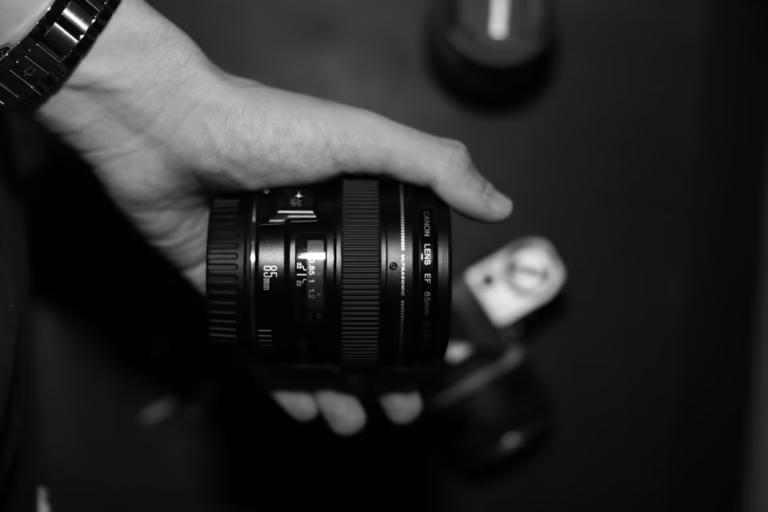
Understanding the different types of photography lenses is crucial for capturing the perfect shot. Knowing which lens to use in various situations can significantly enhance your photographic results. This comprehensive camera lens guide will explore the various types of camera lenses, their functions, and when to use them, providing you with the knowledge to make informed choices for your photography needs. From DSLR camera lens types to those used in mirrorless systems, this article covers the essentials to elevate your craft.
Related Articles:
1. Prime Lenses
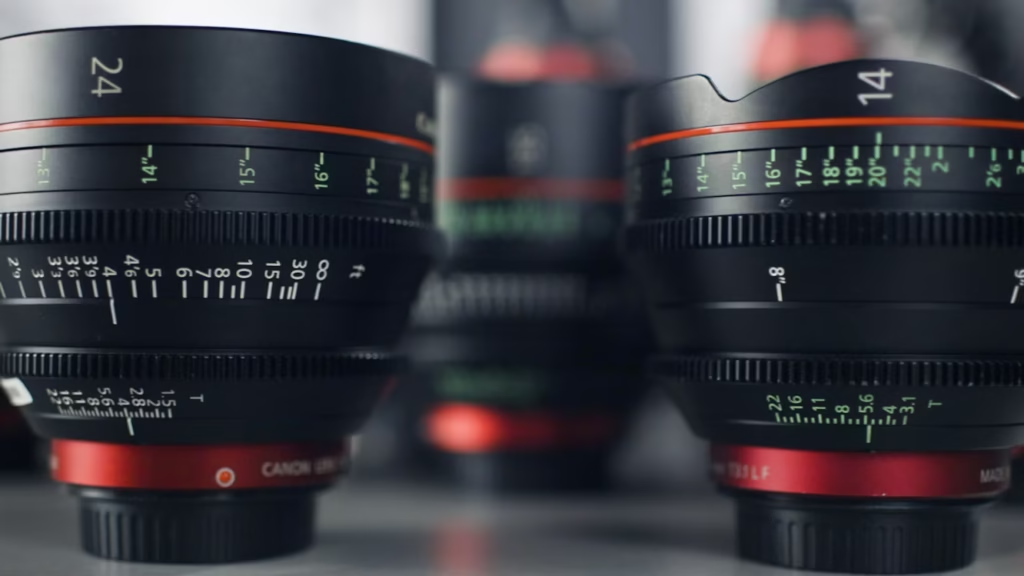
Prime lenses have a fixed focal length, meaning they cannot zoom in or out. This constraint often results in superior image quality, as they are designed with fewer glass elements, leading to sharper images, wider maximum apertures (e.g., f/1.8 or f/1.4), and better low-light performance. They are typically smaller and lighter than zoom lenses, making them ideal for travel or handheld shooting. A common example is the Canon EF 50mm f/1.8 STM, which is compact and affordable, producing crisp images with a natural perspective.
Applications: Prime lenses are perfect for portrait photography, street photography, and low-light scenarios like indoor events or night photography. Their wide apertures create a shallow depth of field, isolating subjects against a blurred background, which is ideal for artistic shots. For instance, a 50mm prime lens captures a field of view similar to the human eye, making it versatile for everyday photography.
When to Use: Choose prime lenses when image sharpness and quality are priorities, or when you want to encourage creative composition by moving physically to frame your shot. Avoid them in dynamic situations where frequent focal length changes are needed.
2. Zoom Lenses
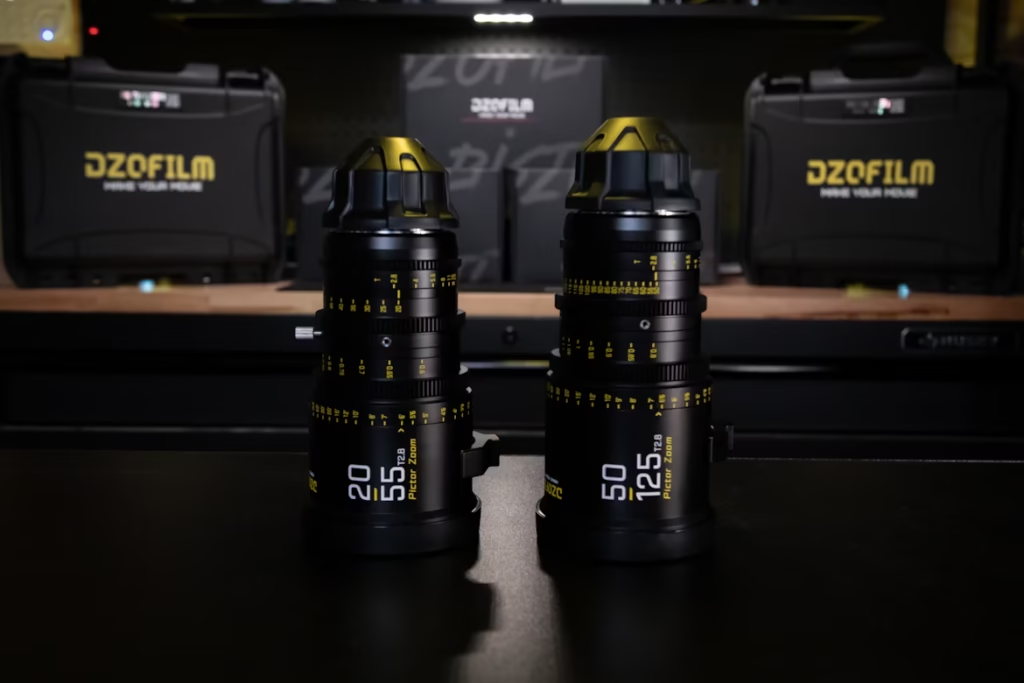
Zoom lenses offer variable focal lengths, allowing photographers to adjust their composition without moving or changing lenses. They range from wide-angle to telephoto, such as the Sony FE 24-70mm f/2.8 GM II, which covers a versatile standard range. While they may not match the sharpness or aperture width of prime lenses, modern zoom lenses provide excellent image quality and convenience, making them a staple for many photographers.
Applications: Zoom lenses are widely used in event photography, travel, and situations requiring flexibility, such as weddings or sports. They allow quick adjustments to frame subjects at varying distances, reducing the need to carry multiple lenses.
When to Use: Use zoom lenses when you need versatility, such as during travel or events where subjects move unpredictably. They’re ideal for capturing both wide scenes and closer details without swapping lenses.
3. Wide-Angle Lenses
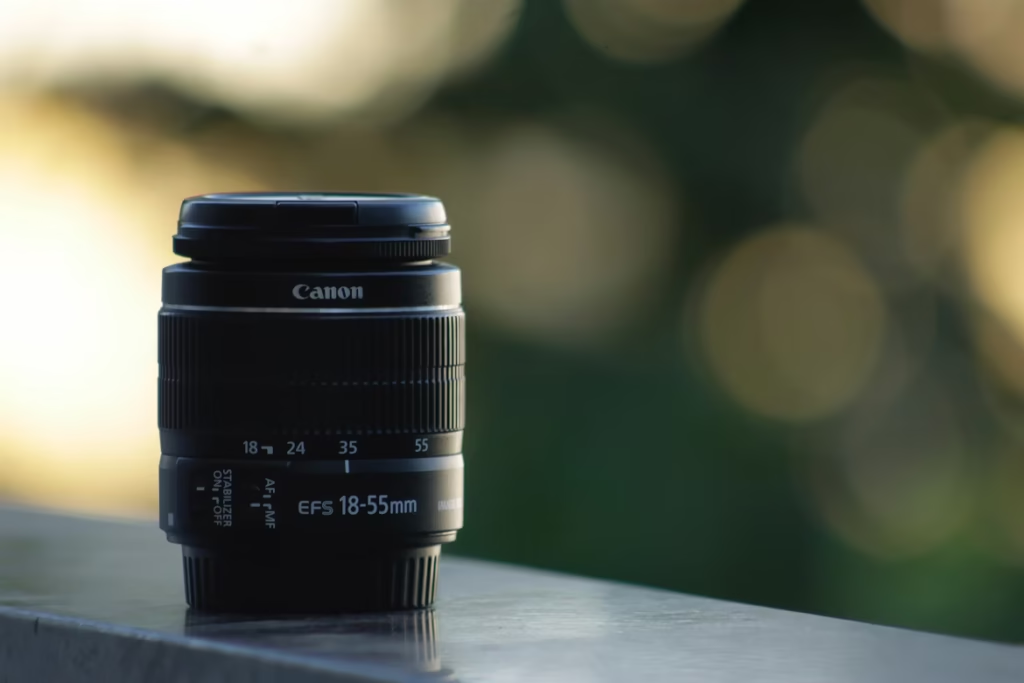
Wide-angle lenses, with focal lengths typically between 10mm and 35mm, capture a broader field of view, making them essential for scenes requiring expansive coverage. They offer greater depth of field, keeping more of the scene in focus, and can exaggerate foreground elements for dramatic effect. An example is the Sony G Master FE 24mm f/1.4 GM, which delivers sharp, wide-angle images.
Applications: These lenses excel in landscape photography, architectural shots, and interior photography, where capturing a large scene in a confined space is necessary. They’re also used in astrophotography to include vast starry skies.
When to Use: Opt for wide-angle lenses when photographing landscapes, cityscapes, or interiors. Be cautious of distortion, especially near the frame’s edges, which can make subjects like faces appear stretched if too close. Software like Adobe Lightroom can correct distortion if needed.
4. Ultra Wide-Angle Lenses
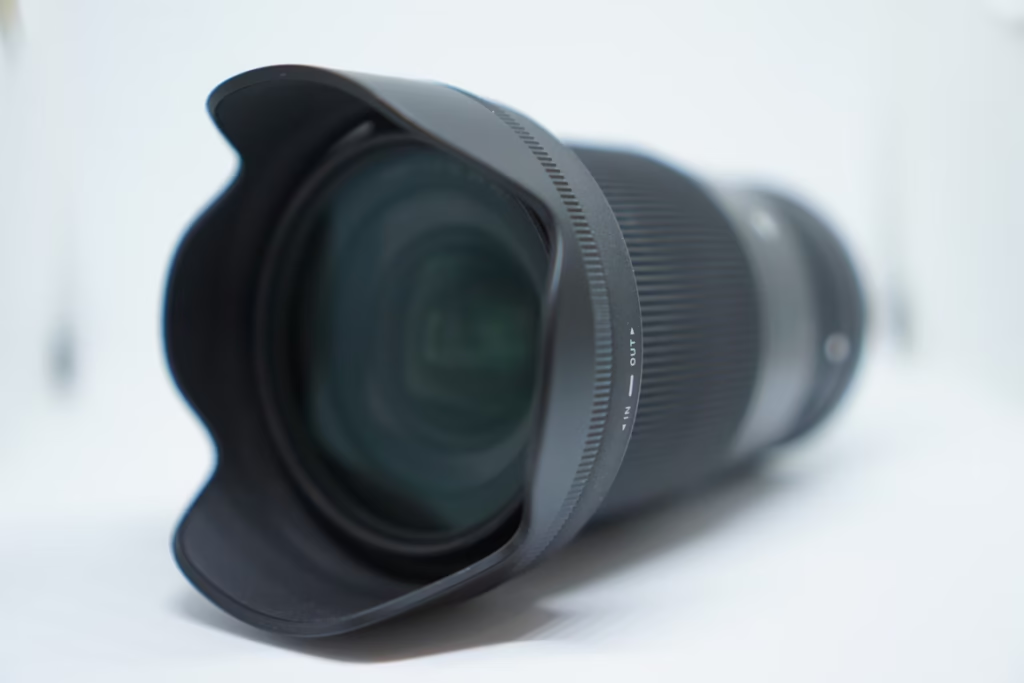
Ultra wide-angle lenses have focal lengths shorter than 24mm on full-frame cameras, providing an even broader field of view than standard wide-angle lenses. They can be rectilinear (keeping straight lines straight) or curvilinear (allowing some distortion). The Canon RF 16mm f/2.8 STM is a compact example, ideal for dramatic perspectives.
Applications: Ultra wide-angle lenses are used for expansive landscapes, architectural photography, and creative shots where an immersive perspective is desired. They’re particularly effective in tight spaces, such as small rooms or narrow streets.
When to Use: Choose ultra wide-angle lenses for dramatic, sweeping shots or when working in confined spaces. They’re great for emphasizing foreground elements but require careful composition to manage distortion, especially in architectural photography.
5. Standard Lenses
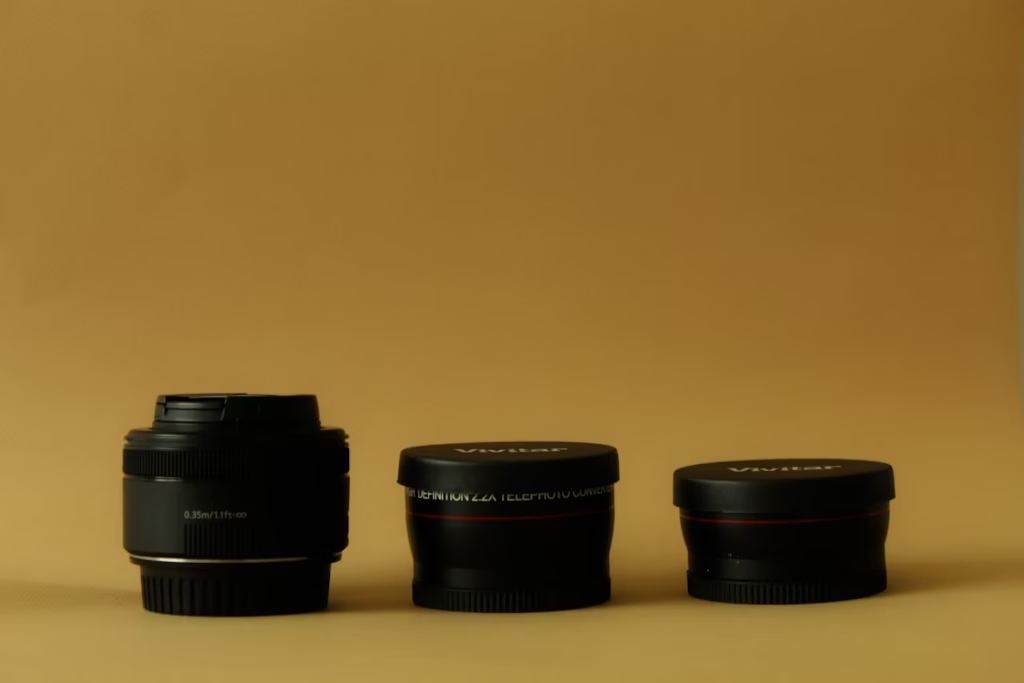
Standard lenses, often called normal lenses, have focal lengths around 40mm to 60mm on full-frame cameras, with 50mm being the most common. They produce images with a natural perspective, closely resembling human vision, with minimal distortion. The Nikon NIKKOR Z 35mm f/1.8 S is a popular standard prime lens.
Applications: Standard lenses are versatile, used in street photography, documentary work, and general photography. Their natural perspective makes them suitable for capturing scenes as they appear to the eye, from candid moments to portraits.
When to Use: Use standard lenses for everyday photography, street scenes, or portraits where a natural look is desired. Their wide apertures make them excellent for low-light conditions, such as indoor or evening shots.
6. Telephoto Lenses
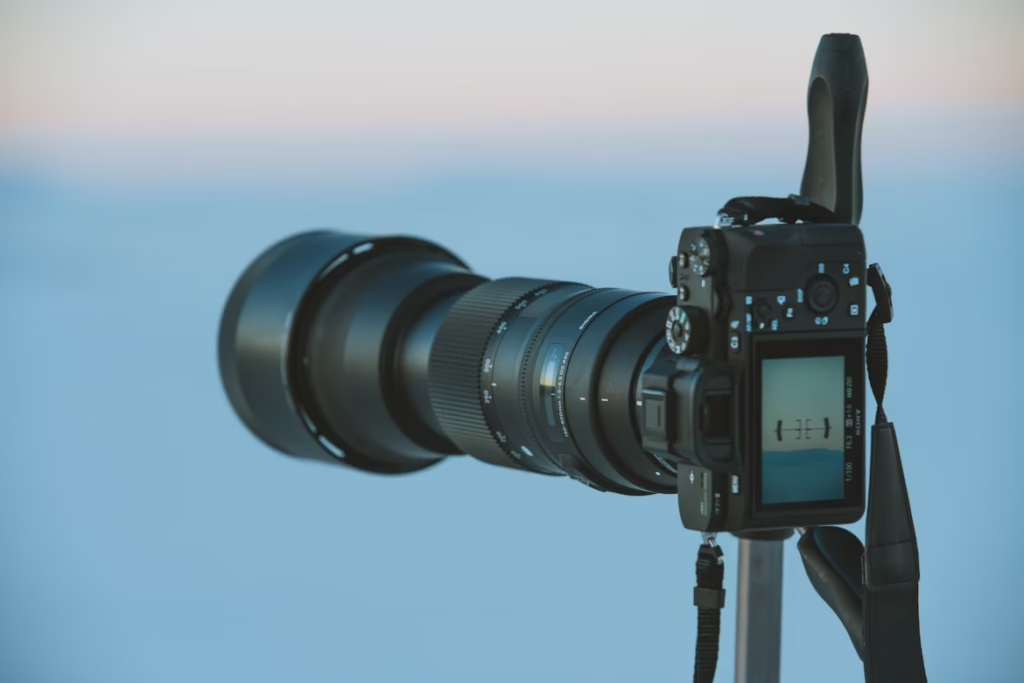
Telephoto lenses, with focal lengths typically ranging from 70mm to 200mm, are designed to capture distant subjects. They compress perspective, making backgrounds appear closer to the subject, and offer a shallow depth of field for subject isolation. The Sony FE 70-200mm f/2.8 GM is a widely used telephoto zoom lens.
Applications: Telephoto lenses are essential for portrait photography, sports, and wildlife, where getting physically close to the subject is challenging or undesirable. They’re also used in landscape photography to isolate specific elements, like a distant mountain.
When to Use: Choose telephoto lenses for photographing distant subjects or when you want a compressed perspective, such as in portraits or sports. Ensure stability, as longer focal lengths amplify camera shake, often requiring a tripod or image stabilization.
7. Super-Telephoto Lenses
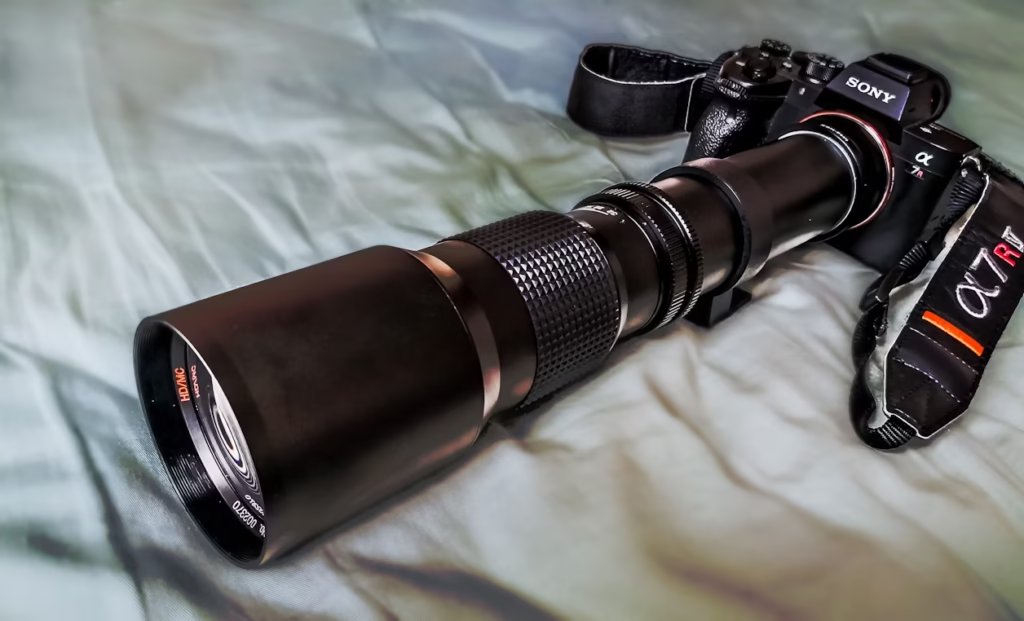
Super-telephoto lenses have focal lengths exceeding 300mm, designed for capturing extremely distant subjects. They are large, heavy, and often expensive, like the Canon RF 1200mm f/8 L IS USM, which costs around $20,000. These lenses are specialized tools for niche applications.
Applications: Super-telephoto lenses are used in wildlife photography, sports (e.g., large stadium events), and astrophotography, such as capturing detailed images of the moon. They’re critical for subjects that are far away or difficult to approach.
When to Use: Use super-telephoto lenses when photographing subjects at extreme distances, like birds in flight or celestial bodies. They require robust support, such as tripods, due to their weight and magnification.
8. Macro Lenses
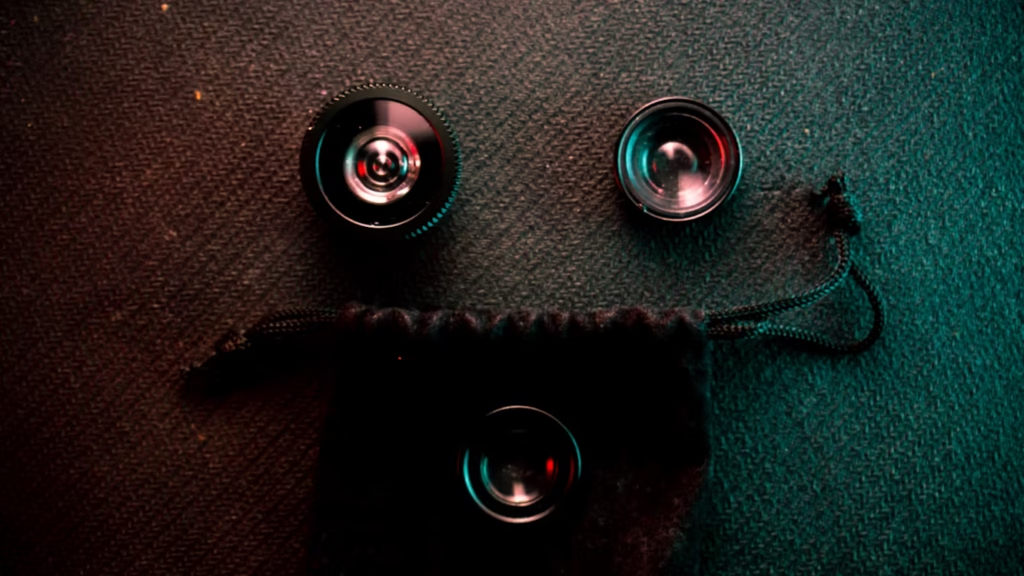
Macro lenses are designed for close-up photography, capable of focusing at very short distances to capture fine details. They often provide 1:1 magnification, meaning the subject appears life-size on the sensor. The Canon RF 100mm f/2.8 L Macro IS USM is a prime example, offering sharp close-ups.
Applications: Macro lenses are used for photographing small subjects like insects, flowers, jewelry, or electronic components. They’re also popular for abstract photography, capturing textures and patterns in everyday objects.
When to Use: Choose macro lenses for detailed close-up shots, such as nature photography or product photography. Longer focal length macro lenses (e.g., 100mm) are preferred for subjects like insects to avoid disturbing them or blocking light.
9. Fisheye Lenses
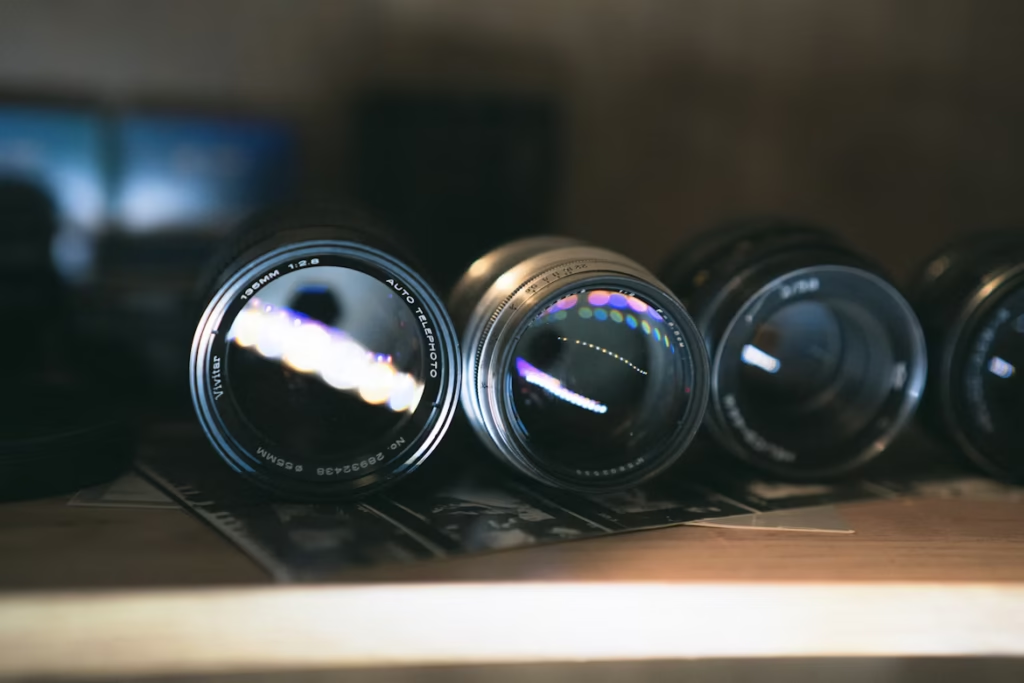
Fisheye lenses are ultra-wide-angle lenses that intentionally produce a distorted, spherical image, often capturing a 180-degree field of view. The Venus Laowa 4mm f/2.8 is a circular fisheye lens, creating a distinctive curved effect.
Applications: Fisheye lenses are used for creative photography, such as surreal landscapes, abstract architecture, or immersive interiors. They’re also employed in scientific applications, like mapping or panoramic imaging.
When to Use: Use fisheye lenses when you want a unique, distorted perspective for artistic or creative purposes. They’re ideal for capturing expansive scenes with a playful or exaggerated look but are less suitable for realistic representations.
10. Tilt-Shift Lenses
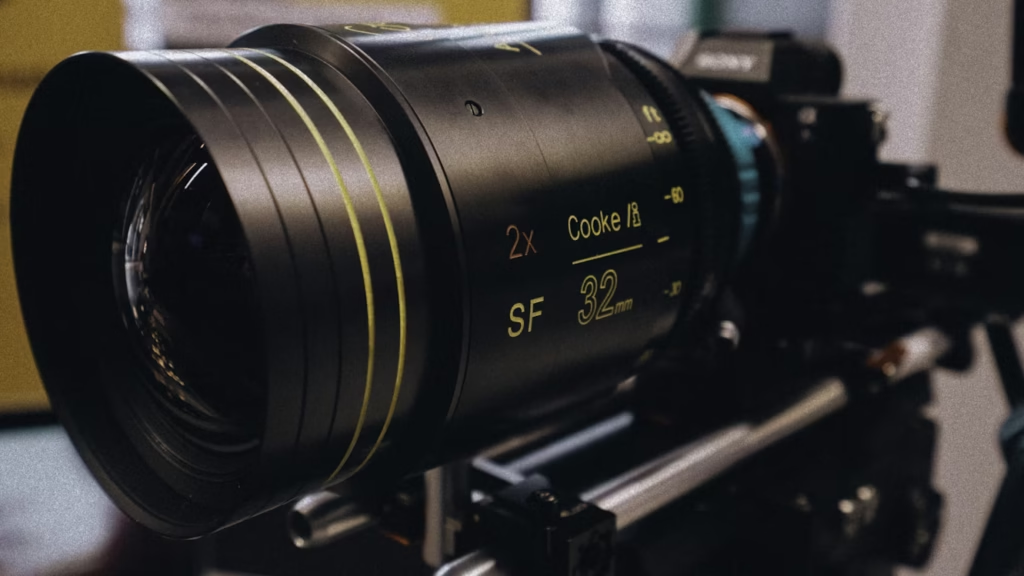
Tilt-shift lenses allow photographers to adjust the lens’s angle and position relative to the sensor, controlling perspective and depth of field. The Canon TS-E 24mm f/3.5L II is a popular tilt-shift lens, used to correct converging lines in architectural shots.
Applications: These lenses are primarily used in architectural photography to keep vertical lines straight, preventing the “keystone” effect. They’re also used in product photography and creative work to achieve selective focus or miniature effects.
When to Use: Choose tilt-shift lenses for architectural photography, especially in tight spaces, or when you want to manipulate depth of field creatively. They require practice to master but offer unparalleled control over perspective.
11. Kit Lenses
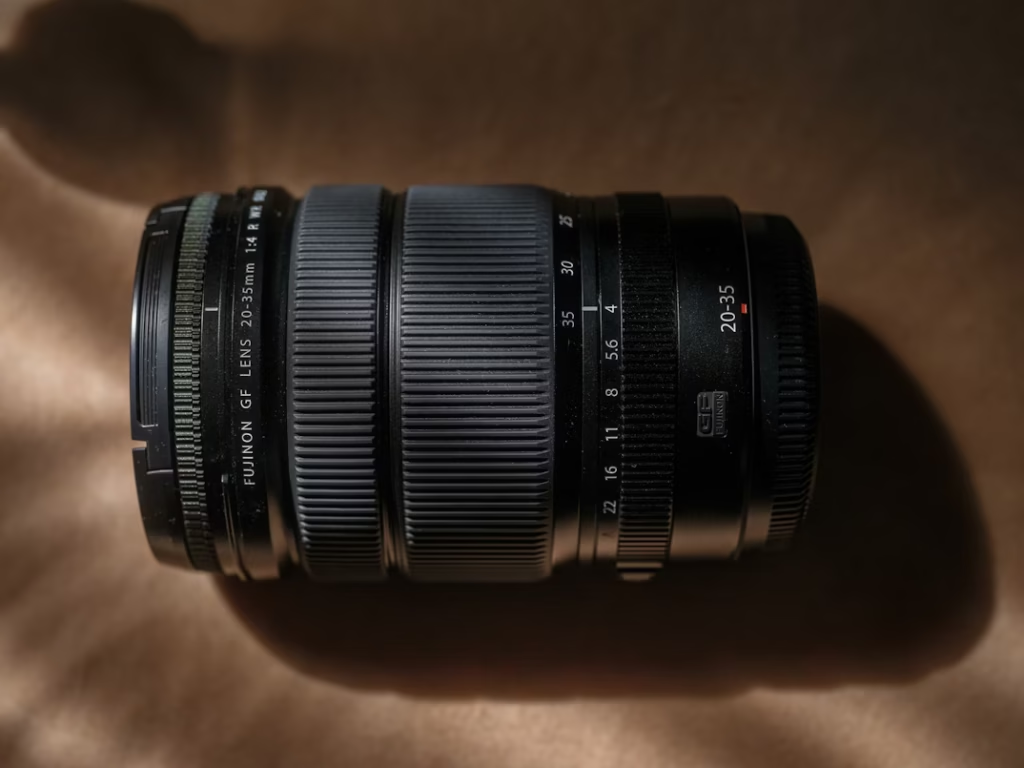
Kit lenses are standard zoom lenses bundled with camera bodies, typically covering a range like 18-55mm for APS-C sensors. They are affordable and versatile, designed for beginners. The Canon EF-S 18-55mm f/3.5-5.6 IS II is a common kit lens.
Applications: Kit lenses are used for general photography, including landscapes, portraits, and everyday snapshots. They’re a practical starting point for new photographers exploring various genres.
When to Use: Use kit lenses for general-purpose photography when starting out or when you need a single, versatile lens. They’re less specialized but sufficient for learning and casual shooting.
12. Superzoom Lenses
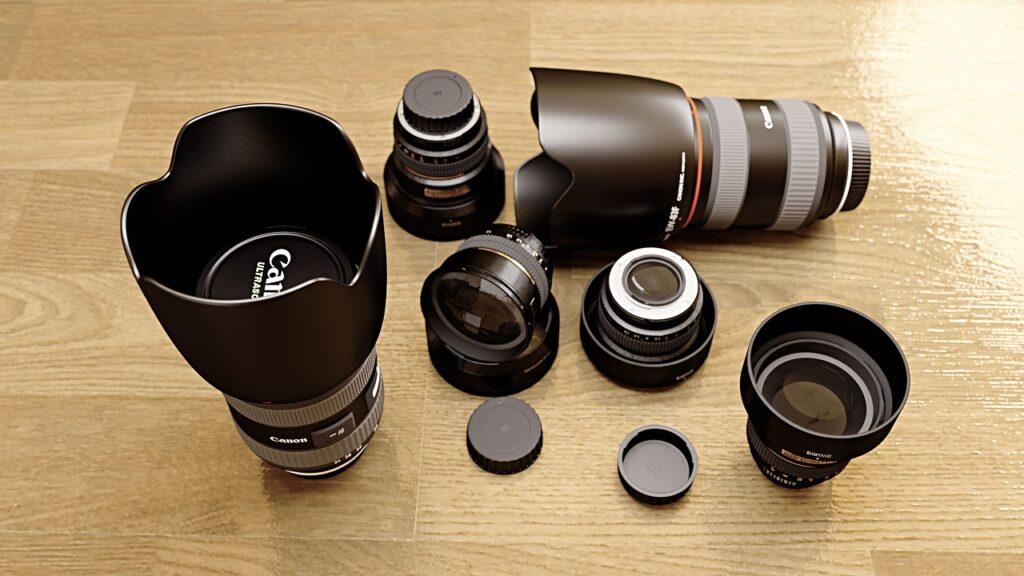
Superzoom lenses offer an extensive focal length range, such as the Tamron 18-400mm f/3.5-6.3 Di II VC HLD, covering wide-angle to telephoto in one lens. They prioritize convenience over absolute image quality, often with smaller apertures.
Applications: Superzoom lenses are popular for travel photography, hiking, or situations where carrying multiple lenses is impractical. They’re versatile for capturing everything from landscapes to distant subjects.
When to Use: Choose superzoom lenses when you need one lens to cover a wide range of scenarios, such as during travel or outdoor adventures. Be aware that image quality may not match specialized lenses.
13. Portrait Lenses
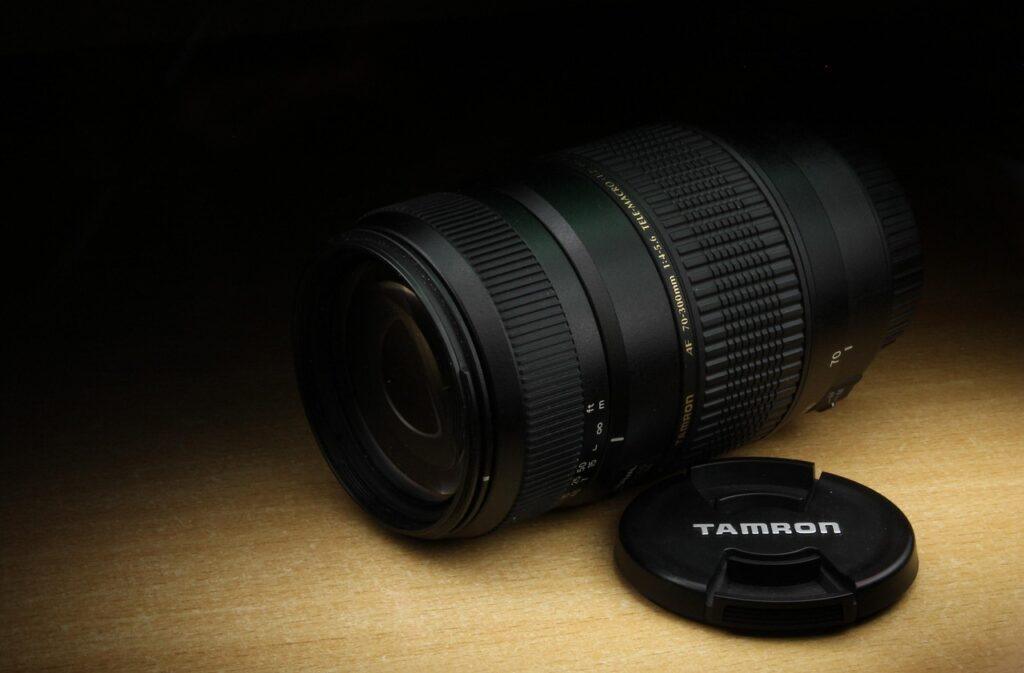
Portrait lenses are typically fast prime lenses with focal lengths between 85mm and 135mm, like the Canon RF 85mm f/1.2L USM. They produce flattering portraits with minimal distortion and beautiful bokeh due to their wide apertures.
Applications: These lenses are designed for portrait photography, capturing headshots or full-body images with a shallow depth of field to isolate the subject from the background.
When to Use: Use portrait lenses for photographing people, especially for professional headshots or artistic portraits. Their focal length and aperture create a pleasing, natural look with creamy backgrounds.
14. Specialty Lenses
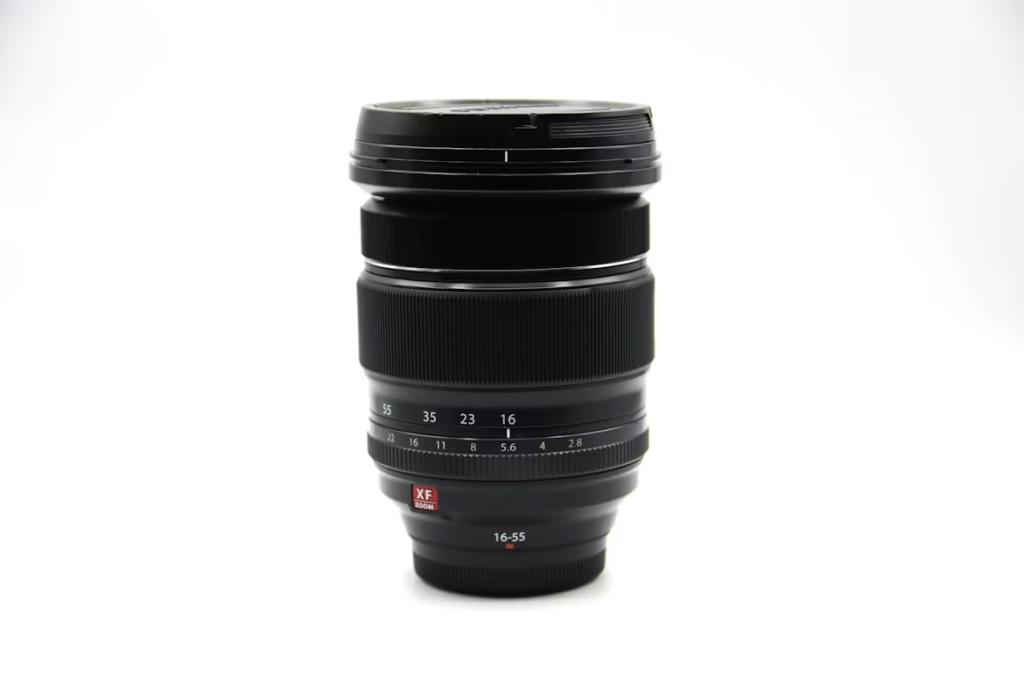
Specialty lenses include unique designs like soft focus lenses (e.g., Lensbaby Velvet 56 for dreamy effects), pinhole lenses for lo-fi aesthetics, or infrared lenses for capturing light beyond the visible spectrum. These lenses cater to niche creative needs.
Applications: Specialty lenses are used for artistic photography, experimental projects, or specific technical applications, such as infrared photography for unique color effects or pinhole photography for a vintage look.
When to Use: Choose specialty lenses when you want to explore unconventional techniques or achieve specific artistic effects. They’re less common but can add a distinctive flair to your portfolio.
Lens Types and Their Applications
| Lens Type | Focal Length Range | Primary Applications | Example Lens |
|---|---|---|---|
| Prime Lenses | Fixed (e.g., 50mm) | Portraits, street, low-light | Canon EF 50mm f/1.8 STM |
| Zoom Lenses | Variable (e.g., 24-70mm) | Events, travel, versatile shooting | Sony FE 24-70mm f/2.8 GM II |
| Wide-Angle Lenses | 10-35mm | Landscapes, architecture, interiors | Sony G Master FE 24mm f/1.4 GM |
| Ultra Wide-Angle Lenses | <24mm | Dramatic landscapes, tight spaces | Canon RF 16mm f/2.8 STM |
| Standard Lenses | 40-60mm | Street, documentary, general photography | Nikon NIKKOR Z 35mm f/1.8 S |
| Telephoto Lenses | 70-200mm | Portraits, sports, wildlife | Sony FE 70-200mm f/2.8 GM |
| Super-Telephoto Lenses | >300mm | Wildlife, sports, astrophotography | Canon RF 1200mm f/8 L IS USM |
| Macro Lenses | Various (e.g., 100mm) | Close-ups, nature, product photography | Canon RF 100mm f/2.8 L Macro IS USM |
| Fisheye Lenses | Ultra-wide (e.g., 4mm) | Creative, surreal, panoramic photography | Venus Laowa 4mm f/2.8 |
| Tilt-Shift Lenses | Various (e.g., 24mm) | Architecture, product, creative focus | Canon TS-E 24mm f/3.5L II |
| Kit Lenses | 18-55mm (APS-C) | General photography, beginners | Canon EF-S 18-55mm f/3.5-5.6 IS II |
| Superzoom Lenses | 18-300mm+ | Travel, versatile shooting | Tamron 18-400mm f/3.5-6.3 Di II VC HLD |
| Portrait Lenses | 85-135mm | Portrait photography | Canon RF 85mm f/1.2L USM |
| Specialty Lenses | Varies | Artistic, experimental photography | Lensbaby Velvet 56 |
Frequently Asked Questions
What is a camera lens?
A camera lens focuses light onto a camera’s sensor or film, controlling framing, perspective, and depth of field. It’s a critical component that determines image quality and creative possibilities.
What are the different types of camera lenses?
The main types include prime, zoom, wide-angle, ultra wide-angle, standard, telephoto, super-telephoto, macro, fisheye, tilt-shift, kit, superzoom, portrait, and specialty lenses, each suited for specific photography needs.
What is the difference between prime and zoom lenses?
Prime lenses have a fixed focal length, offering sharper images and wider apertures, ideal for low-light and portraits. Zoom lenses have variable focal lengths, providing flexibility for dynamic shooting scenarios.
When should I use a wide-angle lens?
Use wide-angle lenses for landscapes, architecture, or interiors to capture a broad scene. They’re great for emphasizing foreground elements but may distort subjects if used too closely.
What is a macro lens used for?
Macro lenses are for close-up photography, capturing fine details of small subjects like insects, flowers, or products, often at 1:1 magnification.
How does focal length affect my photos?
Focal length determines the field of view and perspective. Shorter focal lengths (e.g., 16mm) capture wider scenes, while longer focal lengths (e.g., 200mm) bring distant subjects closer and compress perspective.
What is aperture and how does it impact my images?
Aperture is the lens opening that controls light intake, measured in f-stops (e.g., f/2.8). Larger apertures (smaller f-numbers) allow more light and create a shallow depth of field, while smaller apertures (larger f-numbers) keep more in focus.
Which lens is best for portrait photography?
Portrait lenses, typically 85mm to 135mm prime lenses with wide apertures (e.g., f/1.4), are best for portraits, offering flattering perspectives and creamy bokeh.
Can I use lenses from different manufacturers on my camera?
Yes, but compatibility depends on the camera’s lens mount. Adapters may allow cross-brand use, but some features like autofocus may not work fully. Check compatibility before purchasing.
Conclusion
Understanding the different types of camera lenses and when to use them is fundamental to mastering photography. Each lens type, from versatile zoom lenses to specialized tilt-shift lenses, offers unique capabilities that can transform your images. By selecting the right lens for your subject and creative goals, you can achieve stunning results, whether you’re capturing a sweeping landscape, a detailed macro shot, or a flattering portrait. Experiment with various lenses to discover which ones best suit your style, and invest in high-quality glass to elevate your photography. This guide to camera lens types serves as a roadmap to help you navigate the vast world of photography lenses, empowering you to capture your vision with precision and artistry.

